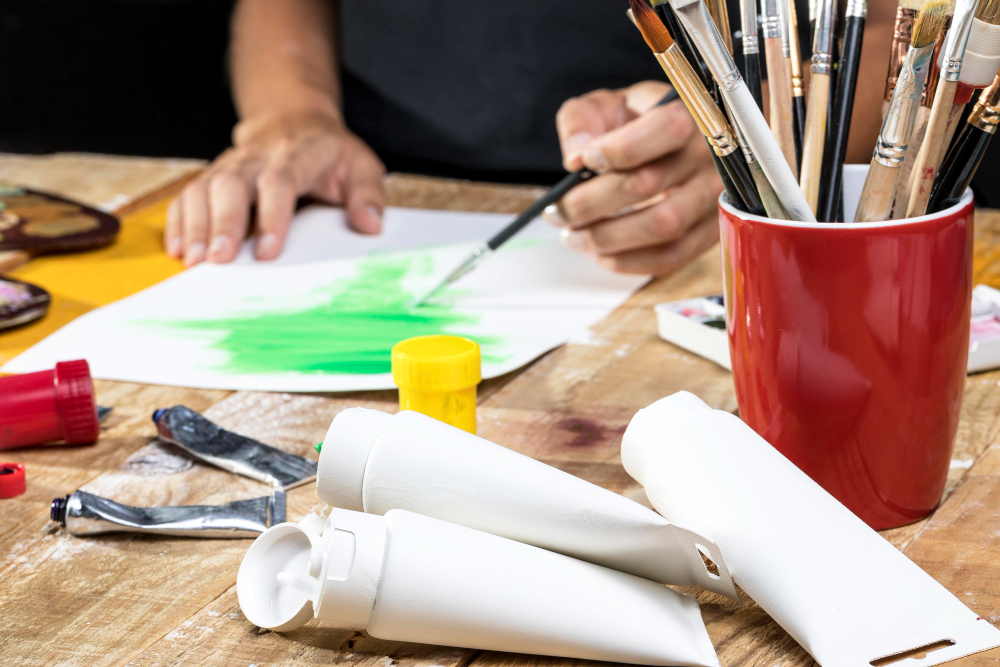
What Tools Can Be Used When Drawing and What Purpose Do They Serve
Pencils are perhaps the most fundamental tool in any artist’s arsenal. Available in various grades of hardness, from soft (e.g., 6B) to hard (e.g., 6H), pencils allow artists to achieve a wide range of tones and textures. The softer the pencil, the darker and more easily blendable the marks it produces, making it ideal for shading and creating depth. Harder pencils, on the other hand, create lighter, more precise lines, perfect for outlining and detailing. With their versatility and accessibility, pencils serve as the foundation upon which drawings come to life.
The Undo Button of Drawing
Erasers play a crucial role in the drawing process, allowing artists to correct mistakes and refine their work. While traditional rubber erasers are used to remove graphite or charcoal marks, kneaded erasers offer greater control and precision, allowing artists to selectively lighten areas or create highlights. Electric erasers are another option, particularly useful for erasing small details or intricate patterns. Whether it’s fixing minor errors or making significant revisions, erasers provide artists with the freedom to experiment and refine their drawings until they achieve perfection.
Adding Ink to the Mix
Pens offer artists a way to add ink to their drawings, creating bold, permanent lines that stand out against the paper. From traditional ballpoint pens to fine-tipped pens and brush pens, there’s a wide variety of options to choose from, each offering unique line weights and textures. Pens are commonly used for outlining, detailing, and adding emphasis to certain areas of a drawing. They can also be used for cross-hatching, stippling, and other techniques to create depth and texture.
Bringing Paint to Paper
While brushes are typically associated with painting, they can also be used in drawing to apply ink or watercolor washes to paper. Brushes come in a variety of shapes and sizes, each suited to different techniques and applications. Round brushes are versatile and can be used for both fine lines and broad strokes, while flat brushes are ideal for covering large areas with washes of color. By varying the pressure and angle of the brush, artists can achieve a wide range of effects, from delicate lines to bold, expressive strokes.
Adding Drama and Depth
Charcoal is a popular drawing medium known for its rich, velvety texture and dramatic tonal range. Available in various forms, including sticks, pencils, and powder, charcoal allows artists to create bold, expressive marks that can be easily blended and manipulated. Charcoal drawings often have a raw, emotive quality, with deep shadows and dynamic contrasts that add drama and depth to the composition. Whether used alone or in combination with other drawing tools, charcoal offers endless possibilities for artistic expression.
Adding Color to the Palette
Pastels are a versatile drawing medium that offers vibrant color and rich texture. Available in various forms, including soft pastels, oil pastels, and pastel pencils, pastels can be used to create both subtle gradients and bold, expressive marks. Soft pastels are particularly popular for their blendability and ability to create soft, luminous effects, while oil pastels offer a more opaque, painterly quality. Pastel pencils provide greater control and precision, allowing artists to add fine details and accents to their drawings.
Precision Tools for Accuracy
While drawing often involves freehand expression, rulers and protractors are indispensable tools for achieving precision and accuracy in technical drawings and architectural renderings. Rulers are used to create straight lines and measure distances, while protractors are used to measure angles and create geometric shapes. These tools help ensure that proportions are accurate and lines are straight, allowing artists to create detailed and realistic drawings with confidence.
Tools of the Trade
Drawing is a versatile and expressive art form that relies on a variety of tools to bring ideas to life on paper. From pencils and erasers to pens, brushes, charcoal, pastels, rulers, and protractors, each tool serves a unique purpose in the creative process. Whether it’s capturing the delicate details of a portrait, rendering the sweeping curves of a landscape, or illustrating the intricate patterns of a design, the right tools empower artists to unleash their creativity and bring their visions to fruition. So, grab your favorite drawing tools and let your imagination soar on the canvas of paper before you.


